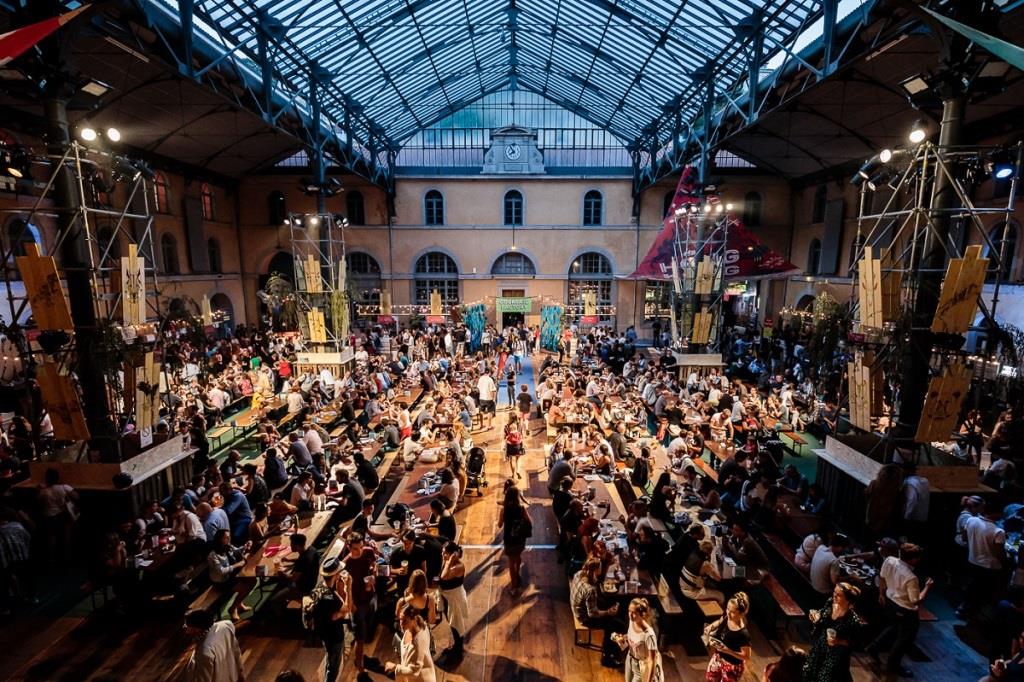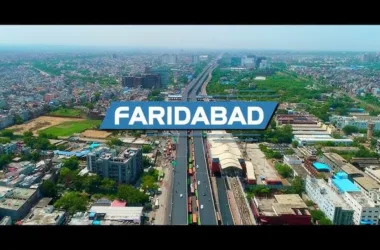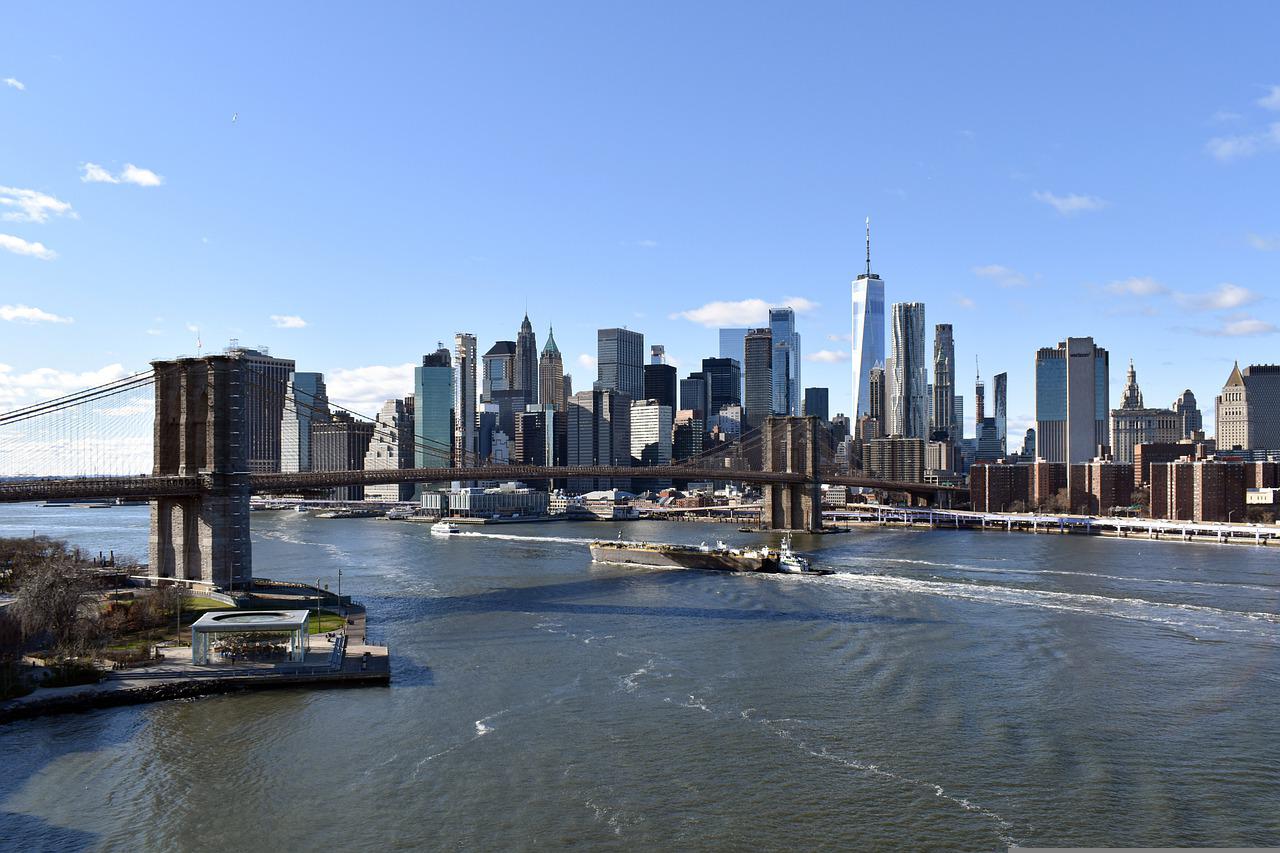Looking at the ancient Pangong Lake, also known as Pangong Tso, you could be forgiven for thinking that it is somewhere other than India. At a truly breathtaking altitude of 14,270 feet (4,350 m) above sea level, the lake presents a true spectacle.
Notably, Pangong Lake is one of the highest saltwater lakes in the world. (It is often said to be the highest but the height of Nam Lake, Nam Tso in Tibet is actually 400 hundred meters higher). The lake is also unusual in that it is completely surrounded by land and is unable to flow anywhere, unlike a river or other water bodies that flow into the ocean.
Apparently, glacial erosion created the basin of the lake, and it was initially a freshwater lake. It became saline over time due to the build-up of mineral deposits, which killed off its aquatic life. No one really knows how deep Pangong Lake is, although it is estimated to be around 300 feet. Although the lake is salty, it freezes in winter. As the weather warms, melting snow from the surrounding peaks replenishes its water supply.
Naturally, Pangong Lake has been of great interest to geologists. However, it was only after starring in the popular Bollywood film “The 3 Idiots” starring Aamir Khan in 2009 that she really rose to fame. Now, it attracts an average of 1,000 tourists a day!
Read on to find out how to visit Pangong Lake in this complete guide.
Location
Pangong Lake is located in the Changthang region of eastern Ladakh, about six hours southeast of the former capital Leh. The route crosses the Ladakh Range through Chang La at an altitude of 17,586 feet (5,360 m) above sea level. It is one of the highest motorable passes in the world. The lake extends for about 135 kilometers (83 mi) and is 5 kilometers (3.1 mi) wide at its widest point.
It is important to note that Pangong Lake is a sensitive disputed area. The Line of Actual Control between India and China runs through the lake near Khurnak Fort, but no country has agreed on where it should be. About a third of the lake is within India, while the rest is in China-dominated Tibet.
How to Visit Pangong Lake
Unlike many high mountain passes, which are closed during winter, the Indian Army keeps the way to Chang La open continuously, except when it is really snowing. Hence, it is possible to visit Pangong Lake throughout the year. The main attraction during winters is being able to walk on the frozen lake. No doubt though, it will be icy cold! Also, accommodation will be limited to basic homestays. May to October is the more comfortable time to visit, with June and July being the peak tourist season. If you want to avoid the worst crowds and commercialization, definitely avoid these two peak season months!
Since Pangong Lake is in a border area, a special permit is required to visit it. Indians need an Inner Line Permit (ILP) for Pangong Lake, while foreigners (except Bhutanese citizens) must have a Protected Area Permit (PAP). Online permits are now being issued here. However, Indians can also obtain ILP from the Tourist Information Center near Jammu and Kashmir Bank in the main market of Leh.
Foreigners should obtain their PAP from a registered travel agent in Leh, especially if traveling alone. Theoretically, at least two foreigners must be in a group to receive a PAP. However, travel agents will add solo travelers to other groups. That doesn’t mean you need to join the group. It is possible to go alone after getting a permit. Note that citizens of Afghanistan, Burma, Bangladesh, Pakistan, and China need permission from the Ministry of Home Affairs in Delhi for PAP, and should apply through the Indian consulate in their home country.
Tourists usually visit Pangong Lake on a day trip from Leh or stay overnight. However, you will not have much time to spend there on a day trip and it will be very tiring. Also, the sunrise and sunset over the lake are spectacular, so spending the night is highly recommended. Pangong Lake can be included in a comprehensive itinerary involving the Nubra Valley (eg Khardung La, Diskit, Hunder, Turtuk) and/or the tranquil Tso Moriri Lake. Foreigners traveling from Pangong Lake to Tso Moriri are not allowed to leave from Chushul and must take the normal route via Chumathang.
How to Stay Safe and Healthy
Altitude sickness is a major health concern when visiting Pangong Lake. According to the Centers for Disease Control and Prevention (CDC), it can affect anyone at altitudes higher than 8,000 feet (2,500 meters) above sea level. Thin air means there is less oxygen to breathe, resulting in lower oxygen levels in the body’s blood (hypoxemia) and tissues (hypoxia). Symptoms can usually range from light-headedness and fatigue to a rare buildup of fluid in the lungs or brain. Therefore, adaptation must be taken seriously, otherwise, you can get dangerously ill.
The body adjusts well to higher altitudes but needs time to last three to five days. Flying into Leh just below 11,500 feet (3,500 meters) above sea level, the steep climb puts travelers in a high-risk category for altitude sickness. After reaching Leh, most people will feel a little sick, like having a hangover. This can be reduced by taking a drug called Diamox (acetazolamide), which speeds up the adaptation process. A prescription is required. Anyone with a pre-existing condition such as heart or lung disease, or diabetes should also consult a doctor before traveling.
It is recommended to rest for at least three nights in Leh after taking off (local sightseeing is fine during the day), before departing for Pangong Lake. This is especially so if you haven’t been to a high-altitude place before and don’t know how your body will react. The amount of oxygen in your blood will be the lowest while you sleep, so this will largely determine how you react. Those who are unwell will normally start to improve by the third night. If you’re feeling really sick, you can head to the nearby Alchi at altitude for a while.
When planning your itinerary, ideally proceed in order of destinations from lowest to highest altitude. The CDC recommends that once you are above 9,000 feet (2,750 m), you should increase your sleeping altitude by no more than 1,600 feet (500 m) per day. This should allow for an additional day of adaptation for every 3,300 feet (1,000 m) you achieve.
Since Pangong Lake is about (850 meters) higher than Leh, it is wise to spend a night in Tangtse village between Leh and Pangong Lake. It is approximately 12,800 feet (3,900 m) above sea level and 35 kilometers (mi) from Pangong Lake and has a medical center. Some people become unwell while passing through the high altitude Chang La about an hour before Tangtse. You will feel better and enjoy your journey at a slower pace.
Other tips to reduce altitude sickness include avoiding alcohol, smoking, and exertion for the first 48 hours. Stay hydrated by drinking water with oral rehydration salts (ORS) appropriately, but not excessively. It is said that eating garlic soup is also beneficial!
Oxygen from a medical-grade tank or oxygen bar is an effective treatment for moderate altitude sickness. Anyone who experiences shortness of breath or cough should seek medical attention immediately. Leh has an excellent hospital near the airport, Sonam Norbu Memorial which treats tourists every day. Most of those recruited have ignored the optimization guidelines.
Less adaptation time to Leh is required when driving from Srinagar in Kashmir or Manali in Himachal Pradesh due to the gradual increase in altitude. The route from Srinagar offers the best option for adaptation as the growth is steady, whereas people coming from Manali may experience sickness along the way due to the fluctuations in altitude.
What to pack for a trip to Ladakh and Pangong Lake will depend on the time of year. During the summer tourist season, temperatures drop dramatically from hot during the day to cold at night, making layering essential. Bring cotton tops and T-shirts, woolen, thermal and windproof jackets. A headband is useful for protecting your ears. The sun is harsh in Ladakh, so also wear sunscreen to avoid burns.
Accommodations and Facilities
Those who wish to visit Pangong Lake independently and choose their own accommodation will find a wide variety available, ranging from basic homestays to luxury tent camps (lakeside glimmers are a thing!).
From May to October tented camps spread along the lake. Tents usually have western-style toilets and en-suite bathrooms with hot water (although this is limited to certain times). Most do not get hot though. Those that are, are usually warm for a few hours at night and in the morning. It can be very cold and windy at night, so keep that in mind. Another consideration is electricity: Camps usually only provide it for a few hours. Some campsites offer wireless Internet in the reception area.
A homestay is a comfortable option. Amenities vary from private rooms to dorm-like dorm rooms (such as Padma Homestay) and from private western-style bathrooms to shared local-style bathrooms. It’s best to just turn around, check out a few places, find the one that suits you, and agree on a price.
Lukung Village, located on top of Pangong Lake, is the entry point and the only village with a view of the entire stretch of the lake. The drawback, however, is that it is a considerable walk to the edge of the lake. If you live in one of the many homes there, choose the one closest to the lake.
The next village, Spangmik, is the most developed (and commercialized) village in Pangong Lake. Most of the people live in this area. The fields have been leased out from Leh to tour companies for setting up tent camps. Camp Redstart is very popular and has luxury doubles from around Rs 5,000 per night. Mystic Pangong is only two hundred meters away from the lake. Its 15 luxury tents cost Rs 3,500 per night. There are many homestays too.
The last of the luxury tent camps is in Mann village, beyond Spangmik, which is quieter and less crowded. One of the best is Pangong Hermitage, which has eight eco-friendly yurts. Rates start at Rs 18,000 per night for a double breakfast. Pangong Sarai is a cheaper option with 25 luxury tents and rates from Rs 3,220 per night for a double. Pangong Travel Camp has 23 luxury tents by the lake, starting at Rs 4,300 per night for one night.
However, if you really want to get off the beaten track, you’ll have to go even further beyond the tiny Marak village. There are some friendly houses out there, and it’s a great way to experience the local culture. One of them is Peaceful Homestay. All guest rooms have en-suite bathrooms with western-style toilets. Expect to pay 2,000 rupees per night for a double.
Homestays and tent camps provide meals for all guests. There are a handful of stalls around the lake that serve everything from momos to dal and rice. If you prefer to eat in a restaurant, P3 Restaurant is famous for its delicious Tibetan food and lake view.
What Else to Do Nearby
- Props including a yellow scooter (belonging to The 3 Idiots Movie) at Pangong Lake are available for rent for those who want to pose and have their own Bollywood moment. (Yes, it’s that commercialization!)
- Birdwatchers can spot migratory birds at Pangong Lake. Tourists also have yaks along for a ride.
- It is possible to visit several Buddhist monasteries on the way from Leh to Pangong Lake. These are Stakna, Thiksey, Hemis, She and Tangtse. There is also a palace in Shey.
- Changthang Wildlife Sanctuary, between Leh and Pangong Lake, is home to the Himalayan marmot. You may be able to find one (but don’t feed them).
Important Links
- Pangong lake china bridge (Link)
- Pangong lake temperature (Link)
- Pangong lake to Leh distance (Link)
- Pangong lake map (Link)
- Pangong lake weather (Link)
Similar Articles









